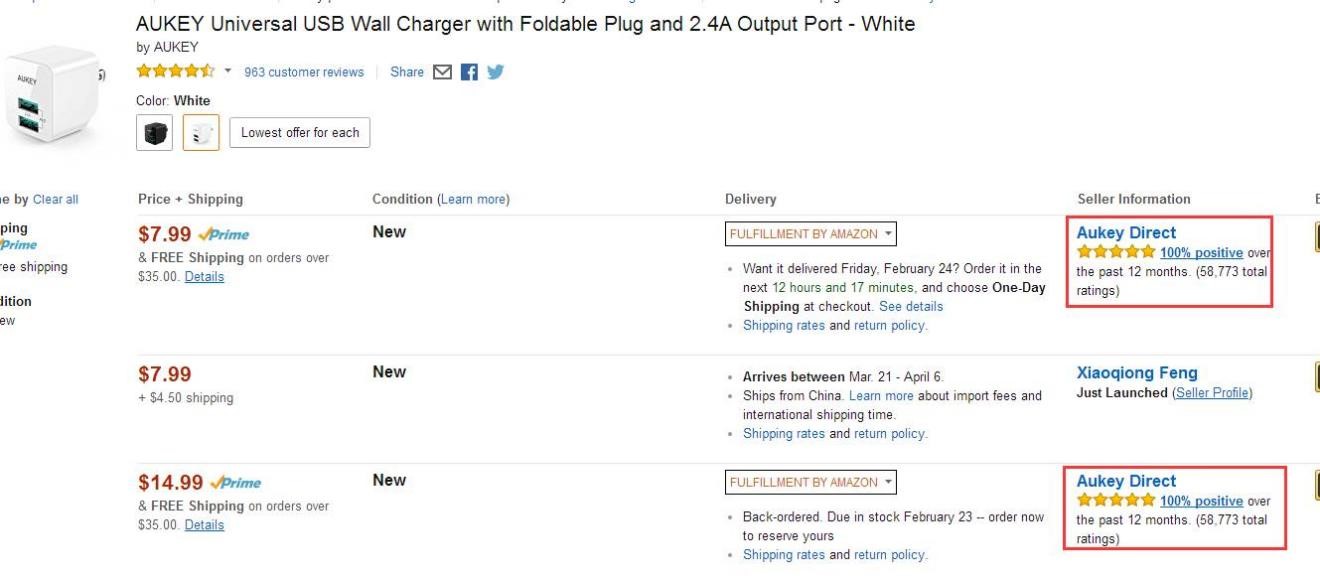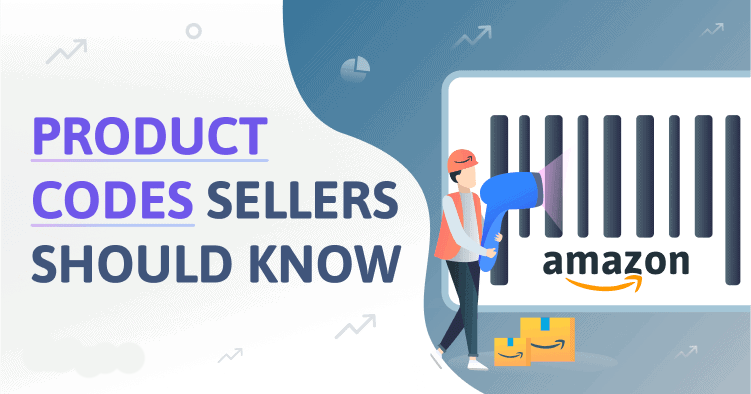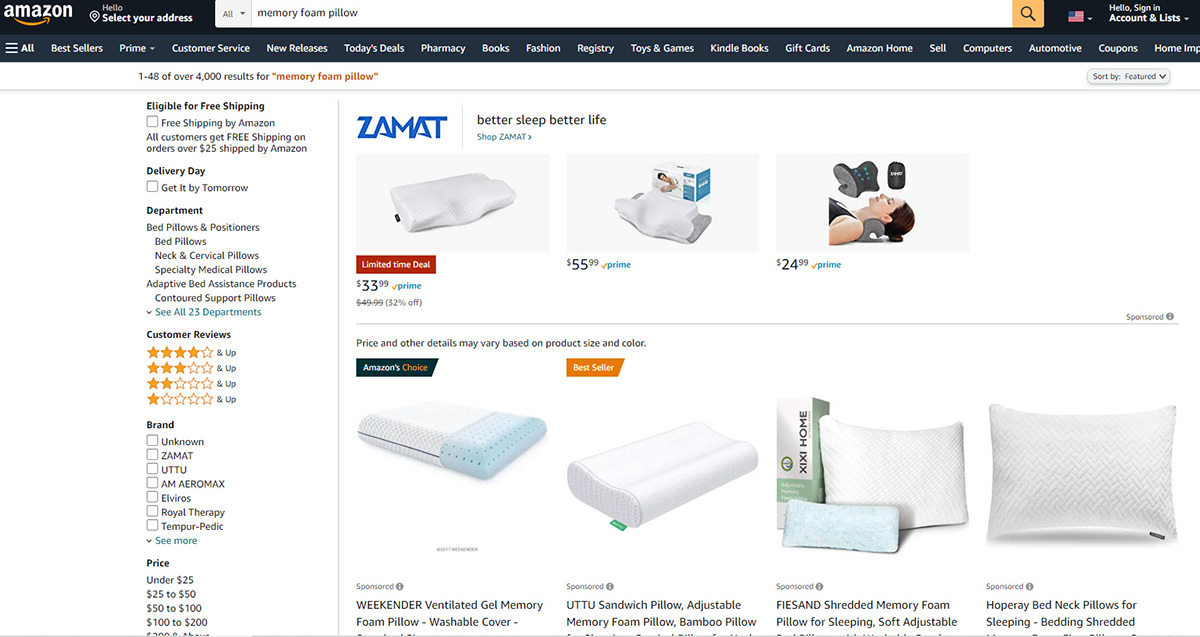For Amazon green hands, the complicated Amazon product codes of varied kinds can confuse them. For example, are you familiar with codes such as SKU, FNSKU, ASIN, UPC and EAN? This article will show you the basic knowledge about Amazon product codes.
1. SKU(Stock Keeping Unit)
SKU is the basic unit for measuring the commodity stock, which can be in units of pieces, boxes, pallets, etc., SKU consists of numbers or letters, or a mix and match of both.
SKU represents a specific product, and each product has an unique SKU, which offers convenience to e-commerce brands to identify the product. When a product has multiple attributes such as different colors and sizes, there are multiple SKUs accordingly. For example, a piece of clothing has three colors of black, white, and gray, and each color has a different code number of S, M, L, and XL, then this clothing has 12 SKUs.
Note: On Amazon, whether you are building a new product or selling an existing product, you need a corresponding SKU. The SKU in each store is not allowed to be repeated, and is the only identifier for the Amazon seller to manage the product. Whereas, the ASIN is just the product ID of Amazon for buyers. In the Amazon inventory management list, one ASIN can correspond to multiple SKUs.
Regarding the SKU writing rules, Amazon does not have strict requirements. When the seller publishes the product, the seller can fill in the SKU column by himself. If you do not fill in, Amazon will automatically generate a SKU code and assign it to you, which will make it difficult to identify. Therefore, in order to facilitate the management of products in the future, it is best for sellers to compile SKUs according to their own management habits or product characteristics.
2. FNSKU
Different from SKU, FNSKU is the product label code of FBA, only for FBA products. One SKU of FBA products corresponds to one FNSKU. Sometimes, the code of FNSKU may be the same as ASIN, that is to say, if there are multiple sellers selling the same ASIN products, their FNSKU may be the same as ASIN. That’s why a customer places an order with you yet receives the goods that are not the ones sent to FBA by yourself.
Note: The same SKU corresponding to the FNSKU may be adjusted due to the performance of the product or related platform policy issues. For example, the mixed inventory (the code is the same as the ASIN) may be supported in the beginning, but later it may need to be changed to, say, a label starting with X. This is also one of the reasons why the same seller has two SKUs of FBA appearing on the same product page at the same time. When sourcing company / sourcing agent does pre-shipment inspection, FNSKU is the key checkpoint.

3. Listing ID
There are listings on platforms such as EBAY and WISH. Many people directly call a listing a product. In fact, it is a product page except for multi-attribute variant products. A listing is automatically generated by Amazon with corresponding Listing ID and ASIN.
In the current Amazon backend product list, you can click the Listing ID and PRODUCT NAME hyperlinks to enter the product page directly. In the frontend, it is impossible to find the corresponding products by search Listing ID. If you search PRODUCT NAME, you may see a series of similar products. In other words, PRODUCT NAME, as the name implies, is only the product name. And since Amazon allows repeated product names, PRODUCT NAME is not the only identification for products.
4. UPC(Universal Product Code)
When uploading products on Amazon, most categories require sellers to use a specific GTIN (Global Trade Item Code, with types such as UPC, EAN, JAN, or ISBN), and the most commonly used code is UPC.
The UPC is a commodity barcode developed by the United States Uniform Code Committee. This code is mainly used in the United States and Canada. UPC was the first barcode to be used on a large scale. Because of its wide range of applications, it is also called universal barcode and is popular in international trade.
UPCs are also available in standard and shortened versions. The standard version consists of 12 digits and the shortened version consists of 8 digits.
The coding structure of the standard version of UPC12 is: system code (1 digit) + manufacturer code (5 digits) + product code (5 digits) + verification code (1 digit).
Different product categories or different types of products in the same category have different UPC requirements. Certain categories may allow sellers to apply for UPC exemptions.
5. EAN(European Article Number)
The EAN is a product identification symbol established on the basis of the UPC. EAN is a commercial bar code formulated by the International Article Numbering Association (GS1), and is universally used. The prefix range allocated to the Chinese Article Numbering Center is 690 to 696. Then the China Article Numbering Center will uniformly assign the enterprise code, and the product code will be compiled by the manufacturer according to the regulations. The standard EAN13 coding structure is: country code (2/3 digits) + manufacturer code (5/4 digits) + product code (5 digits) + verification code (1 digit).
Because the EAN is generated on the basis of the UPC, the photoelectric reader of the EAN system can read the bar code of the UPC system, but the photoelectric reader of the UPC system cannot read the EAN.
6. GCID
If Amazon sellers register their brands on Amazon, Amazon will automatically assign a unique product code called the Global Catalog Identifier Code (GCID) to the product.
When uploading products on Amazon, the seller must provide the UPC/EAN code, but if the seller’s brand is successfully registered and obtains the GCID, then there is no need to purchase codes of EAN or UPC.
7. ASIN
The ASIN (AMAZON STANDARD IDENTIFICATION NUMBER) is Amazon’s own product number, which is automatically generated by the Amazon system and does not need to be added by the seller. The ASIN is equivalent to a unique product ID, showcasing uniqueness on Amazon. The ASINs corresponding to the same product and the same UPC at different sites are usually the same. In other words, one ASIN corresponds to one SKU. ASIN can be used to inquire products in the front-end of the platform and the back-end of the seller’s store.
ASIN is displayed on the product details page, usually in the “Product Details” or “Product Information” column. See the picture below:

Will the ASIN of a product change?
In general, if a seller who has opened a store on Amazon has published a product, the ASIN is generated by the platform, so even if the listing is modified, the ASIN will not be changed. However, when the listing created by the seller shares the same product and similar product description with the listing of other sellers, then in this case, the listing may be merged and the ASIN will also be changed accordingly.
8. ISBN
The International Standard Book Number, abbreviated as ISBN, is an international number specifically designed to identify books and other documents. ISO promulgated the ISBN in 1972, and established the International ISBN Center, the management organization implementing the standard, in the Prussian Library in West Berlin. Currently, publications that use the ISBN coding system include: books, brochures, microform publications, and Braille printed publications. Before January 1, 2007, the ISBN consisted of 10 digits and was divided into four parts: group number (code number of country, region, language), publisher number, book serial number and check code. Since January 1, 2007, the new version of ISBN has been implemented. The new version of ISBN consists of 13 digits and is divided into 5 segments, that is, the original 10 digits plus 3 EAN (European Article Number) “978”. ISBN can be used as a search field in the online bibliography, thus offering another searching approach for users.

9. ISSN
ISSN (International Standard Serial Number) is an international standard code for serial publications formulated according to the international standard ISO3297. The purpose of ISSN is to make each serial publication with different titles and different versions in the world have one international unique code identification. Generally, serialized journals need to apply for ISSN. The number is composed of “ISSN” as a prefix + 8 digits. The 8 digits are divided into two segments, each with 4 digits, and the middle part between two segments is connected by a connecting number “-”. The format of ISSN is shown as follows:
ISSN XXXX-XXXX As shown in the picture (ISSN: 1052-4096), the first 7 digits are the sequence numbers, and the last digit is the check digit. ISSN is usually printed on the cover or copyright page of the journal.
- Other Codes
On Amazon, there are also some other codes that may be seen such as Manufacturer Part Number and MODEL NO.
If you have any questions on Amazon product codes or sourcing products from China, please feel free to contact us.



